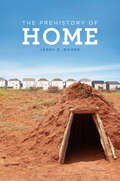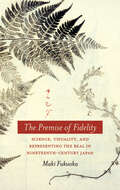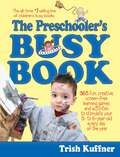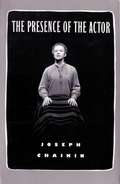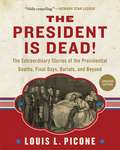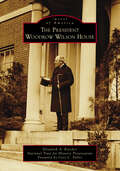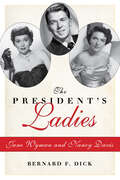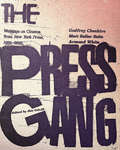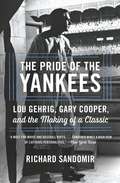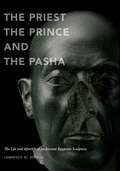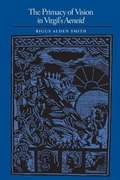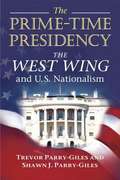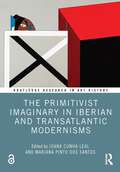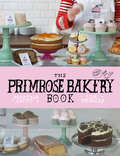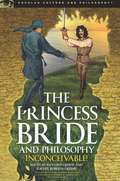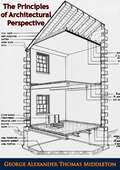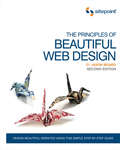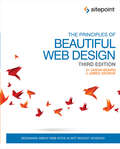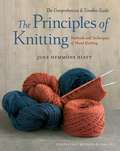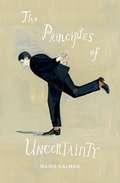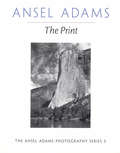- Table View
- List View
The Prehistory of Home
by Jerry D. MooreMany animals build shelters, but only humans build homes. No other species creates such a variety of dwellings. Drawing examples from across the archaeological record and around the world, archaeologist Jerry D. Moore recounts the cultural development of the uniquely human imperative to maintain domestic dwellings. He shows how our houses allow us to physically adapt to the environment and conceptually order the cosmos, and explains how we fabricate dwellings and, in the process, construct our lives. The Prehistory of Home points out how houses function as symbols of equality or proclaim the social divides between people, and how they shield us not only from the elements, but increasingly from inchoate fear.
The Premise of Fidelity: Science, Visuality, and Representing the Real in Nineteenth-century Japan
by Maki FukuokaThe Premise of Fidelityputs forward a new history of Japanese visuality through an examination of the discourses and practices surrounding the nineteenth century transposition of "the real" in the decades before photography was introduced. This intellectual history is informed by a careful examination of a network of local scholars-from physicians to farmers to bureaucrats-known as Shohyaku-sha. In their archival materials, these scholars used the termshashin(which would, years later, come to signify "photography" in Japanese) in a wide variety of medical, botanical, and pictorial practices. These scholars pursued questions of the relationship between what they observed and what they believed they knew, in the process investigating scientific ideas and practices by obsessively naming and classifying, and then rendering through highly accurate illustration, the objects of their study. This book is an exploration of the process by which the Shohyaku-sha shaped the concept of shashin. As such, it disrupts the dominant narratives of photography, art, and science in Japan, providing a prehistory of Japanese photography that requires the accepted history of the discipline to be rewritten.
The Preschooler's Busy Book: 365 Fun, Creative, Screen-Free Learning Games and Activities to Stimulate Your 3- to 6-Year-Old Every Day of the Year
by Trish Kuffner Laurel AielloThe Preschooler's Busy Book is packed with 365 fun, engaging activities that will delight your preschooler, such as how to make a Thanksgiving tree or an animal pancake or even how to camp indoors. The Preschooler's Busy Book offers creative reading, math, and science activities for children ages 3-6 to help stimulate their natural curiosity. It also includes money-saving tips such as how to make your own paints, play dough, clays, glue, paste, and other arts and crafts supplies. A great book for parents and daycare providers!The Preschooler's Busy Book contains 365 fun, creative activities to stimulate your preschooler every day of the year! It also shows parents and daycare providers how to: save money by making paints, play dough, clays, glue, paste, and other arts and crafts supplies; prevent boredom during even the longest stretches of inclement weather with ideas for indoor play, kitchen activities, and arts and crafts projects; stimulate a child's natural curiosity with fun reading, math, and science activities; encourage a child's physical, mental, and emotional growth with ideas for music, dance, drama, and outdoor play; celebrate holidays and special occasions with projects and activities; and keep children occupied during long trips or cross-town errands. This activity book has it ALL for busy preschoolers and their parents or daycare providers! It is also written with warmth and sprinkled with humor and insight.
The Presence of the Actor
by Joseph ChaikinChaikin, who directed the celebrated Open Theater in the '60s, kindled an emphasis on communal playmaking whose impact is still evident today. This conversational review of his efforts details his methods and reveals the struggles involved in the creation of some of the most exciting theatre of our time.
The President Is Dead!: The Extraordinary Stories of the Presidential Deaths, Final Days, Burials, and Beyond
by Louis L. PiconeA fun, anecdote-filled, encyclopedic look at the circumstances surrounding the deaths of every president and a few almost presidents,” such as Jefferson Davis. Packed with fun facts and presidential trivia, The President Is Dead! tells you everything you could possibly want to know about how our presidents, from George Washington to Gerald Ford (who was the most recent president to die), met their ends, the circumstances of their deaths, the pomp of their funerals, and their public afterlives, including stories of attempted grave robbings, reinterments, vandalism, conspiracy theories surrounding their deaths, and much more.The President Is Dead! is filled with never-before-told stories, including a suggestion by one prominent physician to resurrect George Washington from death by transfusing his body with lamb’s blood. You may have heard of a plot to rob Abraham Lincoln’s body from its grave site, but did you know that there was also attempts to steal Benjamin Harrison's and Andrew Jackson’s remains? The book also includes ?Critical Death Information,” which prefaces each chapter, and a complete visitor’s guide to each grave site and death-related historical landmark. An ?Almost Presidents” section includes chapters on John Hanson (first president under the Articles of Confederation), Sam Houston (former president of the Republic of Texas), David Rice Atchison (president for a day), and Jefferson Davis. Exhaustively researched, The President Is Dead! is richly layered with colorful facts and entertaining stories about how the presidents have passed. Skyhorse Publishing, as well as our Arcade imprint, are proud to publish a broad range of books for readers interested in history—books about World War II, the Third Reich, Hitler and his henchmen, the JFK assassination, conspiracies, the American Civil War, the American Revolution, gladiators, Vikings, ancient Rome, medieval times, the old West, and much more. While not every title we publish becomes a New York Times bestseller or a national bestseller, we are committed to books on subjects that are sometimes overlooked and to authors whose work might not otherwise find a home.
The President Woodrow Wilson House (Images of America)
by Elizabeth A. KarcherThe timeless home of our 28th president, perfectly preserved from the 1920s, serves as an unforgettable backdrop for learning about our past as Americans. The Trust opened the doors of the museum in 1963 for visitors to explore this significant site with over 8,400 one-of-a-kind historic artifacts. The book boasts a treasure trove of images from the Trust museum's archives, offering a visually stunning journey through history. On March 4, 1921, Woodrow and Edith Wilson moved from the White House into their new home - just a mile and a half away - at 2340 S Street NW in Washington, DC's Kalorma neighborhood. The former president lived here until his death in 1924. Edith called it home until her passing in 1961, at which time she bequeathed the house and its furnishing to the National Trust for Historic Preservation to serve as a monument to President Wilson. A century after Woodrow Wilson left office, his policies and legacy continue to animate our national conversations about American foreign policy, race relations, and the meanings of progressivism and democracy. The President Woodrow Wilson House's executive director, Elizabeth A. Karcher, presents a meticulously researched and engaging narrative that illuminates the house's evolution from private residence to a dynamic cultural institution. The National Trust for Historic Preservation, a private, nonprofit organization that works to save America's historic places, owns and operates the Woodrow Wilson House.
The President’s Ladies: Jane Wyman and Nancy Davis
by Bernard F. DickRonald Reagan, a former actor and one of America's most popular presidents, married not one but two Hollywood actresses. This book is three biographies in one, discovering fascinating connections among Jane Wyman (1917–2007), Ronald Reagan (1911–2004), and Nancy Davis (b. 1921–2016). Jane Wyman, who married Reagan in 1940 and divorced him seven years later, knew an early life of privation. She gravitated to the movies and made her debut at fifteen as an unbilled member of the chorus, then toiled as an extra for four years until she finally received billing. She proved herself as a dramatic actress in The Lost Weekend, and the following year, she was nominated for an Oscar for The Yearling and soon won for her performance in Johnny Belinda, in which she did not speak a single line. Other Oscar nominations followed, along with a Golden Globe for her portrayal of Angela Channing in Falcon Crest. Conversely, Nancy Davis led a relatively charmed life, the daughter of an actress and the stepdaughter of a neurosurgeon. Surrounded by her mother's friends—Walter Huston, Spencer Tracy, Katharine Hepburn, Lillian Gish, and Alla Nazimova, her godmother—Davis started in the theater, then moved on to Hollywood, where she enjoyed modest success, and finally began working in television. When she married Reagan in 1952, she unwittingly married into politics, eventually leaving acting to concentrate on being the wife of the governor of California, and then the wife of the president of the United States. In her way, Davis played her greatest role as Reagan's friend, confidante, and adviser in life and in politics. This book considers three actors who left an indelible mark on both popular and political culture for more than fifty years.
The Press Gang: Writings on Cinema from New York Press, 1991-2011
by Godfrey Cheshire Armond White Matt Zoller SeitzA dialogue about cinema's legacy and best directors through essays by three of the best long-form critics out there, collected from the legendary NYPress for the first time.Comprising of the kind of long-form criticism that is all too rare these days, the weekly film columns in the NYPress included polemics, reviews, interviews, festival reports and features. A far cry from what is often derisively termed the "consumer report" mode of criticism, Cheshire, Seitz and White were passionately engaged with the film culture of both their own time, and what had come before. They constituted three distinctly different voices: equally accomplished, yet notably individual, perspectives on cinema. Their distinctive tastes and approaches were often positioned in direct dialogue with each other, a constant critical conversation that frequently saw each writer directly challenging his colleagues. Dialogue is important in criticism, and here you can find a healthy example of it existing under one proverbial roof. This three-way dialogue between Cheshire, Seitz and White assesses the 1990s in cinema, along with pieces on New York's vibrant repertory scene that allow us to read the authors' takes on directors such as Hitchcock, Lean, Kubrick, Welles, Fassbinder and Bresson; as well as topics such as the legacy of Star Wars, film noir, early film projection in New York City, the New York Film Critics Circle, Sundance, the terrorist attacks of 9/11 and the emerging cinema of Iran and Taiwan.
The Pride of the Yankees: Lou Gehrig, Gary Cooper, and the Making of a Classic
by Richard SandomirOn July 4, 1939, Gehrig delivered what has been called "baseball's Gettysburg Address" at Yankee Stadium. There is, for now, no known, intact film of Gehrig's speech, but instead, just a swatch of the newsreel footage has survived, incorporating his opening and closing remarks: "For the past two weeks you have been reading about the bad break I got. Yet today I consider myself the luckiest man on the face of this earth," the last line, of course, having become one of the most famous, invoked, and inspiring, ever, anywhere. The New York Times account, the following day, called it "one of the most touching scenes ever witnessed on a ball field", that made even hard-boiled reporters "swallow hard." The scene and the story would likely have been largely lost to history, altogether, were it not for the film, Pride of the Yankees, best known for Gary Cooper, as the dying Lou Gehrig, movingly describing himself as "the luckiest man on the face of the earth," even as his body was being ravaged by the disease that was soon named after him. Here, now, in THE PRIDE OF THE YANKEES: Lou Gehrig, Gary Cooper, and the Making of a Classic by Richard Sandomir, New York Times sports columnist, is, for the first time, the full story behind the pioneering, seminal movie. Filled with larger than life characters and unexpected facts, Iron Hero shows us how Samuel Goldwyn had no desire to making a baseball film but he was persuaded to make a quick deal with Lou's widow, Eleanor, not long after Gehrig had passed; Hollywood icon Cooper had zero knowledge of baseball and had to be taught to play; unknown parts of the screen treatment and screenplay that will be written about for the first time; and dishy letters to Eleanor from Christy Walsh, the pioneering business manager who represented the Gehrigs, from the Los Angeles set. Nostalgic, breezy and fun, THE PRIDE OF THE YANKEES captures a lost time in film and sports history.
The Priest, The Price, And The Pasha
by Lawrence M. BermanSometime in the early fourth century BC, an unknown Egyptian master carved an exquisite portrait in dark-green stone. The statue that included this head of a priest, likely a citizen of ancient Memphis, may have been damaged when the Persians conquered Egypt in 343 BC, before it was buried in a temple complex. Its adventures were not over: after almost two millennia, the head was excavated by Auguste Mariette, a founding figure in French archaeology. Sent to France as part of a collection assembled for the inimitable Bonaparte prince known as Plon-Plon, it found a home in his faux Pompeian palace. After disappearing again, it resurfaced in the collection of American aesthete Edward Perry Warren, who donated it to the MFA, Boston. Along the way, this compelling, mysterious sculpture has reflected the evolving understanding of Egyptian art.
The Priest, the Price, and the Pasha
by Lawrence M. BermanSometime in the early fourth century BC, an unknown Egyptian master carved an exquisite portrait in dark-green stone. The statue that included this head of a priest, likely a citizen of ancient Memphis, may have been damaged when the Persians conquered Egypt in 343 BC, before it was buried in a temple complex. Its adventures were not over: after almost two millennia, the head was excavated by Auguste Mariette, a founding figure in French archaeology. Sent to France as part of a collection assembled for the inimitable Bonaparte prince known as Plon-Plon, it found a home in his faux Pompeian palace. After disappearing again, it resurfaced in the collection of American aesthete Edward Perry Warren, who donated it to the MFA, Boston. Along the way, this compelling, mysterious sculpture has reflected the evolving understanding of Egyptian art.
The Primacy of Vision in Virgil's Aeneid
by Riggs Alden SmithOne of the masterpieces of Latin and, indeed, world literature, Virgil's Aeneid was written during the Augustan "renaissance" of architecture, art, and literature that redefined the Roman world in the early years of the empire.<P><P> This period was marked by a transition from the use of rhetoric as a means of public persuasion to the use of images to display imperial power. Taking a fresh approach to Virgil's epic poem, Riggs Alden Smith argues that the Aeneid fundamentally participates in the Augustan shift from rhetoric to imagery because it gives primacy to vision over speech as the principal means of gathering and conveying information as it recounts the heroic adventures of Aeneas, the legendary founder of Rome.
The Prime-Time Presidency: The West Wing and U.S. Nationalism
by Shawn J. Parry-GilesContrasting strong women and multiculturalism with portrayals of a heroic white male leading the nation into battle, The Prime-Time Presidency explores the NBC drama The West Wing, paying particular attention to its role in promoting cultural meaning about the presidency and U.S. nationalism. Based in a careful, detailed analysis of the "first term" of The West Wing's President Josiah Bartlet, this criticism highlights the ways the text negotiates powerful tensions and complex ambiguities at the base of U.S. national identity--particularly the role of gender, race, and militarism in the construction of U.S. nationalism. Unlike scattered and disparate collections of essays, Trevor Parry-Giles and Shawn J. Parry-Giles offer a sustained, ideologically driven criticism of The West Wing. The Prime-time Presidency presents a detailed critique of the program rooted in presidential history, an appreciation of television's power as a source of political meaning, and television's contribution to the articulation of U.S. national identity.
The Primitive, the Aesthetic, and the Savage: An Enlightenment Problematic
by Tony C. BrownTony C. Brown examines &“the inescapable yet infinitely troubling figure of the not-quite-nothing&” in Enlightenment attempts to think about the aesthetic and the savage. The various texts Brown considers—including the writings of Addison, Rousseau, Kant, and Defoe—turn to exotic figures in order to delimit the aesthetic, and to aesthetics in order to comprehend the savage.In his intriguing exploration Brown discovers that the primitive introduces into the aesthetic and the savage an element that proves necessary yet difficult to conceive. At its most profound, Brown explains, this element engenders a loss of confidence in one&’s ability to understand the human&’s relation to itself and to the world. That loss of confidence—what Brown refers to as a breach in anthropological security—traces to an inability to maintain a sense of self in the face of the New World. Demonstrating the impact of the primitive on the aesthetic and the savage, he shows how the eighteenth-century writers he focuses on struggle to define the human&’s place in the world. As Brown explains, these authors go back again and again to &“exotic&” examples from the New World—such as Indian burial mounds and Maori tattooing practice—making them so ubiquitous that they come to underwrite, even produce, philosophy and aesthetics.
The Primitivist Imaginary in Iberian and Transatlantic Modernisms (Routledge Research in Art History)
by Joana Cunha Leal Mariana Pinto dos SantosTaking into account politics, history, and aesthetics, this edited volume explores the main expressions of primitivism in Iberian and Transatlantic modernisms. Ten case studies are thoroughly analyzed concerning both the circulations and exchanges connecting the Iberian and Latin American artistic and literary milieus with each other and with the Parisian circles. Chapters also examine the patterns and paradoxes associated with the manifestations of primitivism, including their local implications and cosmopolitan drive. This book opens up and deepens the discussion of the ties that Spain and Portugal maintained with their imperial pasts, which extended into European twentieth-century colonialism, as well as the nationalist and folk aesthetics promoted by the cultural industry of Iberian dictatorships. The book significantly rethinks long-established ideas about modern art and the production of primitivist imagery. The book will be of interest to scholars working in art history, Iberian studies, Latin American studies, colonialism, and modernism. The Open Access version of this book, available at www.taylorfrancis.com, has been made available under a Creative Commons Attribution-Non Commercial-No Derivatives (CC-BY-NC-ND) 4.0 license.
The Primrose Bakery Book
by Lisa Thomas Martha SwiftThe Primrose Bakery is a way of life. From croissants for breakfast to layer cakes at tea, it has the whole day covered. And of course their signature buttercream cupcakes are delicious any time of day!With over 80 inspirational and easy-to-follow recipes for cupcakes, layer cakes, biscuits, loaves and much more, as well as tips like perfect icing, The Primrose Bakery Book is a baking bible. It is also a gorgeously quirky window onto the very special day-to-day world of the Primrose Bakery.
The Princess Bride and Philosophy: Inconceivable!
by Richard Greene Rachel Robison-GreeneThe Princess Bride is the 1987 satirical adventure movie that had to wait for the Internet and DVDs to become the most quoted of all cult classics. <P><P> The Princess Bride and Philosophy is for all those who have wondered about the true meaning of "Inconceivable!," why the name "Roberts" uniquely inspires fear, and whether it's truly a miracle to restore life to someone who is dead, but not necessarily completely dead. The Princess Bride is filled with people trying to persuade each other of various things, and invites us to examine the best methods of persuasion. It's filled with promises, some kept and some broken, and cries out for philosophical analysis of what makes a promise and why promises should be kept. It's filled with beliefs which go beyond the evidence, and philosophy can help us to decide when such beliefs can be justified. It's filled with political violence, both by and against the recognized government, and therefore raises all the issues of political philosophy. Westley, Buttercup, Prince Humperdinck, Inigo Montoya, the giant Fezzik, and the Sicilian Vizzini keep on re-appearing in these pages, as examples of philosophical ideas. Is it right for Montoya to kill the six-fingered man, even though there is no money in the revenge business? What's the best way to deceive someone who knows you're trying to deceive him? Are good manners a kind of moral virtue? Could the actions of the masked man in black truly be inconceivable even though real? What does ethics have to say about Miracle Max's pricing policy? How many shades of meaning can be conveyed by "As You Wish"?
The Princess Bride: Official Cookbook
by Jenn Fujikawa"As you dish!" Few films have captured the hearts and imaginations like The Princess Bride. Based on the book by William Goldman, the 1987 film, directed by Rob Reiner and starring Cary Elwes, Robin Wright, Mandy Patinkin, Billy Crystal, Andre the Giant, Carol Kane, Chris Sarandon, Wallace Shawn, Christopher Guest, Fred Savage, and Peter Falk is as universally beloved as it is quotable. Now, for the first time, The Princess Bride Cookbook: The Official Cookbook features more than 50 recipes for dishes seen in, and inspired by, the film, including: Buttercup Buttermilk Scones Hash You Wish Farm Boy Breakfast Six-Fingered Sandwiches Chips of Insanity MLT The Grandson&’s Soup and Sandwich Vizzini&’s Sicilian Meatballs Fezzik&’s Stew The Spaniard&’s Paella Bread Pirate Roberts Twu Wove&’s Kiss Cookies Iocane Powder Punch Inigo Montoya&’s Taste of Revenge Perfect for fans, families, and Brute Squads, The Princes Bride: The Official Cookbook is the ultimate way for home cooks to plate up the adventure, comedy, and romance of everyone&’s favorite film.
The Principles of Architectural Perspective: with Chapters on Isometric Drawings and the Preparation of Finished Perspectives
by George Alexander Thomas MiddletonAn efficiently arranged text book on perspective for the use of architectural draughtsmen. Its author, the architect G. A. T. Middleton (1861-1935), was for many years a leading figure in the Society of Architects, between 1884 and 1925 an independent breakaway group from the RIBA.
The Principles of Beautiful Web Design: 101 Essential Tips, Tricks And Hacks
by Jason BeairdThis second edition of The Principles of Beautiful Web Design is the ideal book for people who can build websites, but are seeking the skills and knowledge to visually enhance their sites.This book will teach you how to:Understand the process of what makes "good design," from discovery through to implementationUse color effectively, develop color schemes, and create a paletteCreate pleasing layouts using grids, the rule of thirds, and symmetryEmploy textures: lines, points, shapes, volumes, and depthApply typography to make ordinary designs look greatChoose, edit, and position effective imageryAnd lots more...This revised, easy-to-follow guide is illustrated with beautiful, full-color examples, and leads readers through the process of creating great designs from start to finish.It also features:Updated information about grid-based designHow to design for mobile resolutionsInformation about the future of web fonts including @font-faceCommon user-interface patterns and resources
The Principles of Beautiful Web Design: Designing Great Web Sites is Not Rocket Science!
by Jason Beaird James GeorgeThe Principles of Beautiful Web Design is the ideal book for people who can build websites, but are seeking the skills and knowledge to visually enhance their sites.This book will teach you how to:Understand what makes "good design," from discovery through to implementationUse color effectively, develop color schemes, and create a paletteCreate pleasing layouts using grids, the rule of thirds, and symmetryEmploy textures: lines, points, shapes, volumes, and depthApply typography to make ordinary designs look greatChoose, edit, and position effective imageryAnd lots more...This easy-to-follow guide is illustrated with beautiful, full-color examples, and will lead you through the process of creating great designs from start to finish. The third edition of this book has been greatly revised and now features:Updated and expanded coverage of mobile and responsive web design (RWD)A new sample projectNew sections on user interface and icon designCommon user-interface patterns and resources
The Principles of Knitting
by June Hemmons HiattThe definitive book of knitting techniquesA word-of-mouth phenomenon since its original publication, with a passionate and loyal following, The Principles of Knitting has served as a treasured resource for an entire generation of knitters. Now completely revised and updated, this long-awaited new edition contains indispensable information for every knitter, from the beginner to the most experienced, on all aspects of the craft.Written in clear, direct language, The Principles of Knitting is like having a knitting mentor by your side, ready to answer any question in a comprehensive, reasoned, and informed manner. June Hemmons Hiatt includes instructions for all facets of knitting, from the most basic skills to the most advanced techniques, and offers suggestions for best practices as well as alternatives and innovations.The Principles of Knitting provides the inspiration and instruction to help every knitter gain the knowledge and confidence needed to produce unique, beautifully crafted garments, accessories, and household items. It is the one reference guide no knitter should be without.The classic work on this timeless and important craft
The Principles of Uncertainty
by Maira KalmanThe Principles of Uncertainty is an irresistible invitation to experience life through the psyche of Maira Kalman, one of this country's most beloved artists.
The Print (Ansel Adams Photography Ser. #Vol. 3)
by Ansel Adams Robert BakerThe Print is the third and final book in the seminal Ansel Adams Photography Series. The Print belongs on every photographer's shelf. It covers the entire printmaking process, from designing and furnishing a darkroom and experimenting with your first print, to mastering advanced techniques such as developer modifications, toning, and bleaching, and burning and dodging. This thorough guide is filled with indispensable darkroom techniques and tips. It is an indispensable tool for mastering the complex art of photographic printmaking. Photographs, instuctional line drawings.
The Printed Square: Vintage Handkerchief Patterns for Fashion and Design
by Nicky AlbrechtsenShowcasing a wealth of arresting color combinations, weaves, and patterns in more than 200 gorgeous examples, The Printed Square by Nicky Albrechtsen reveals the hidden history of the fashionable handkerchief. Period photographs, an analysis of fabric and design trends, and detailed information on collecting vintage handkerchiefs make this one-of-a-kind treasure a must-have for style mavens and fashionistas, lovers of vintage clothes, and designers of all disciplines.
